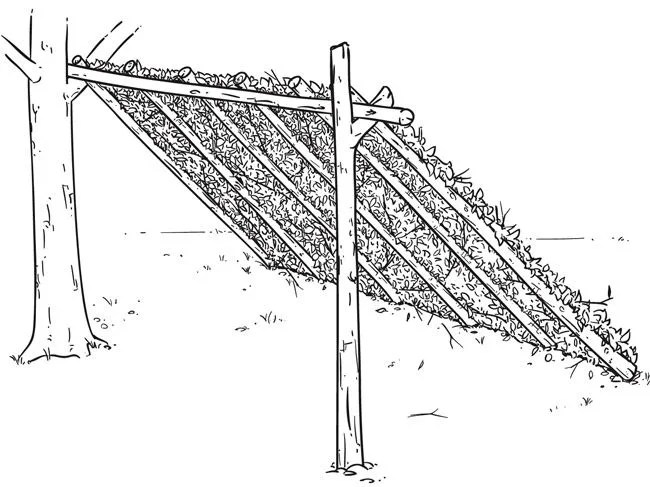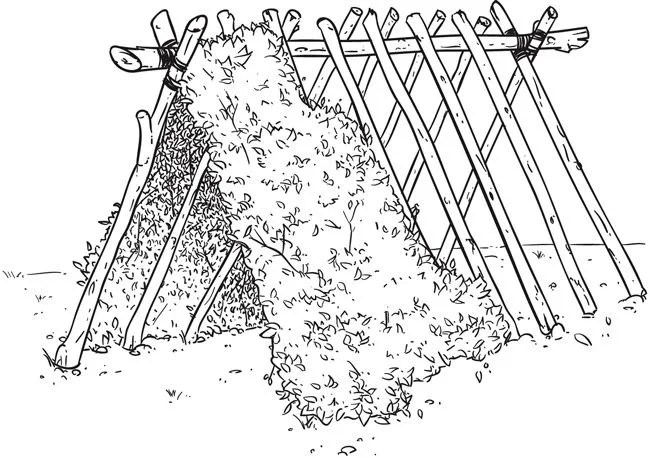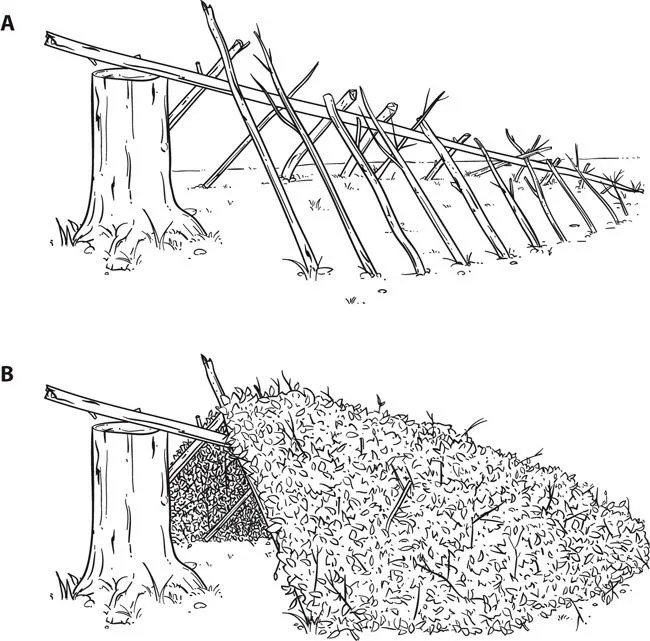Editor’s Note: A term still young to American colloquialism, “bushcraft” refers the to individual’s ability to adapt to a range of different outdoor environments with limited resources on-hand, thereby surviving hostile and potentially life-threatening situations. (By effect, the bushcrafter is the person who carries knowledge and skills necessary to do so.) This excerpt comes from Bushcraft 101: A Field Guide to the Art of Wilderness Survival, where author and survival expert Dave Canterbury (known for his role in the television series Dual Survivor) takes readers through the basic principles of getting by in the wild with less. Shelter is vital to survival in the wild, but little understood by amateur outdoor enthusiasts — and what they know often relies on using tents, tarps, or bivy sacks. But when caught in the wilderness without these tools, the ability to construct a shelter with natural materials is paramount to minimize the risk of harm, or even death. Canterbury shares three basic techniques that could save your hide.
The skill and knowledge to build natural shelters is the most important thing any beginning bushcrafter can possess. Why? Because adequate shelter is the most critical component for survival in the woods. You can carry many things easily on your person — even without a pack — the loss of which would be at least a serious inconvenience. Cutting tools, combustion devices, and containers can easily be attached to your belt, and cordage can be salvaged or carried in your pockets as well, but adequate shelter is another story.
If for any reason you lose your shelter or it becomes damaged, you must know how to construct one using the materials you have. There are many forms of natural shelters you can construct if you are without a decent tarp or tent. However, understanding what type of shelter to build and what materials to use is the key to controlling conduction, convection, and radiation. When building any natural shelter, the first consideration is the structural material that is available and workable in the area. Deadfall materials have the least impact on the environment, take the least physical effort, and are the least time-consuming to gather; however, you must ensure that they are structurally safe. Though they are dead, they may need to support considerable weight by the time you are finished. Any main supports (which should be at least 3″ in diameter) should be cut green, if at all possible. External framework not supporting total weight can be constructed from dead fallen material with little risk.
There are three main forms of natural shelters: the lean-to shelter, the A-frame shelter, and the debris hut. However, you can construct any natural shelter to mimic a tarp configuration as well.
MORE OUTDOOR STORIES: Guide to Camp Stoves | Guide to Survival Gear | Best Hiking Shoes of 2014
Lean-to

If the weather is fair and you can take advantage of the breeze, a lean-to-style shelter is best. You can make a lean-to by lashing a simple cross pole between trees. Add several more saplings at a 45° angle to the ground on one side, then weave in horizontal vines or cuttings. Once this is accomplished, waterproof the lean-to by adding more cuttings from bottom to top, layering them always with the growth upside down. (This will allow water to be channeled away from the shelter. If any cuttings are placed as they grow, water will collect toward the joints and run down into the shelter.) Avoid branches that can catch water or rain and drip inside the shelter.


